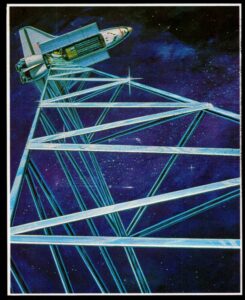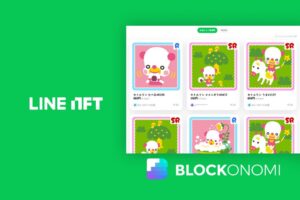
Why
Humans learn through emotion and information. I don’t think trade shows, college fairs, and other forms of conferences currently provide that at scale. When I think about great experiences, they’re always accompanied by a profound interaction. This could be great conversation, emotional resonance, etc. The showcase boards give users the autonomy to travel around a scene, have audio play from the phone, and learn more about a company without having to listen to information that isn’t useful to them. Discretionary discovery.
Also — in the case of company or portfolio showcase boards, it can be used at a lunch conversation, business interview, etc.
How
I started experimenting with Reality Composer on the iPhone and initially build an experience for my podcast. This was experiment #1.
The build process in Reality Composer is straightforward. There are three gizmos which are used for asset movement. Green — vertical movement, Red — horizontal movement, and blue — vertical movement. In addition, there is an object enhancer at the top right which is the central button used to transform, configure, and scale assets.
Experiment #2 included more frames, text, and objects. This was a company showcase board for Tech Pod. In this experience, I wanted to showcase the products and success stories the company offers and transform the 2D LinkedIn experience into a 3D walking one.
As the complexity and elaborateness of the scenes increased, I also played around with different frames, callouts, and text options to find out the most optimal place for assets.
Experiment #3 was completed with several different frames, new callout features, objects, and the entire project was executed outdoors.
The final augmented showcase board was completed in my backyard + allowed me the space I needed in order to create a more comprehensive, robust experience. While build 3 had more frames and features, it required more understanding around user mapping, more anchor points, and environmental understanding.
Breakdown:
User Mapping: The pre-requisite to a great user experience is an understanding around the flow, how the user will engage at each step with the final experience. After knowing this, I’m able to create an experience that will create the best interaction and engage the user for the duration’s full experience.
Anchor points: Anchor’s are the key reason why the AR objects were able to be placed in the physical world. The anchors in AR are similar to the anchors on a ship. They indicate the stopping point of the content/ship.
Environmental understanding: After building two experiences inside + experimenting with them, the key learning I had from the outdoor experience was — anchor points change based on the plane, external context, and complexity. Too many frames, without space, didn’t allow for a great indoor experience. I moved the assets outdoors, changed all the anchor points to fit eye-level, and increased the spacing of objects.
Other learnings from experiment #3:
A key part of the AR build experience is iteration based on the original storyboard. Version 1.0 of my build #3 was not final. I changed my design 4–5 times prior to releasing the final one on YouTube.
Create something shareable. I had the chance to learn from the Niantic CTO in February and he mentioned that the key reason for Pokemon Go’s success was their ability to create a relevant, creative, shareable experience between users that converged communities and increased their user base.
- 3d
- All
- app
- AR
- around
- article
- asset
- Assets
- audio
- Augmented Reality
- BEST
- board
- build
- Building
- business
- change
- College
- Communities
- company
- conferences
- Conversation
- Creating
- Creative
- CTO
- CZ
- Design
- discovery
- Drop
- Elaborate
- environmental
- etc
- Experiences
- experiment
- Features
- fit
- flow
- full
- great
- Green
- GV
- How
- HTTPS
- information
- interaction
- Interview
- iPhone
- IT
- Key
- LEARN
- learning
- medium
- New Features
- Niantic
- Offers
- Options
- order
- Other
- Outdoor
- outdoors
- podcast
- pokemon
- portfolio
- Products
- project
- Reality
- Scale
- So
- Space
- started
- Stories
- success
- Success Stories
- tech
- time
- top
- trade
- travel
- users
- ux
- Video
- walking
- world
- youtube


